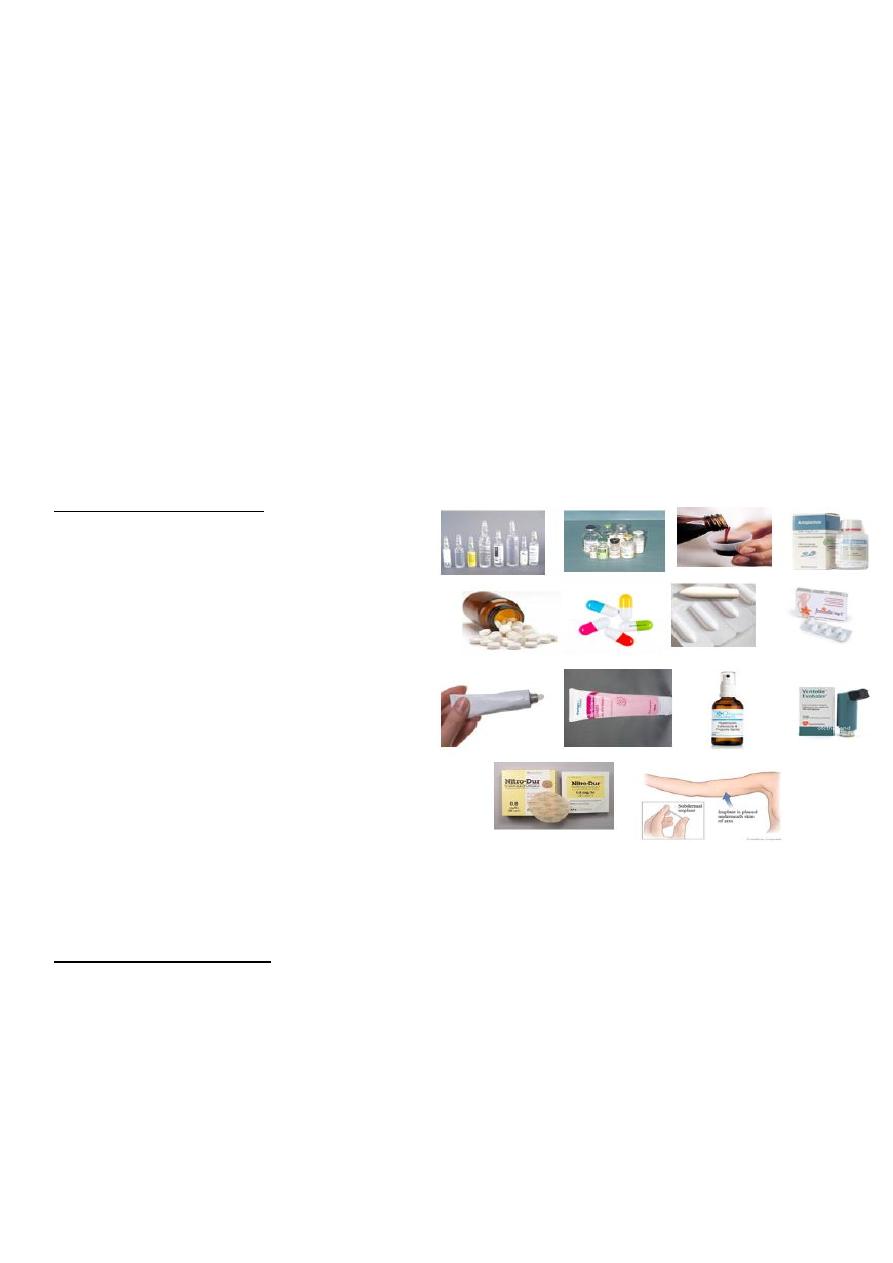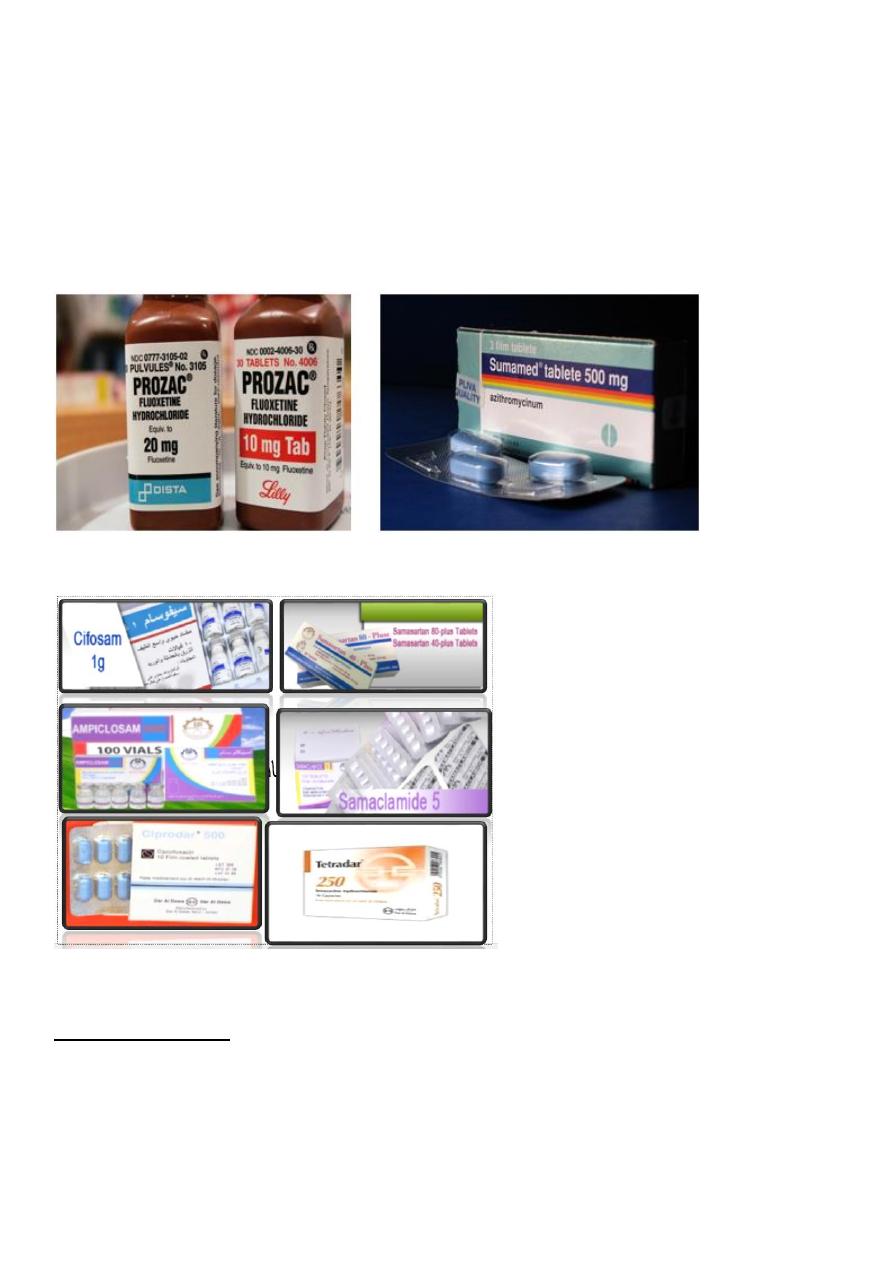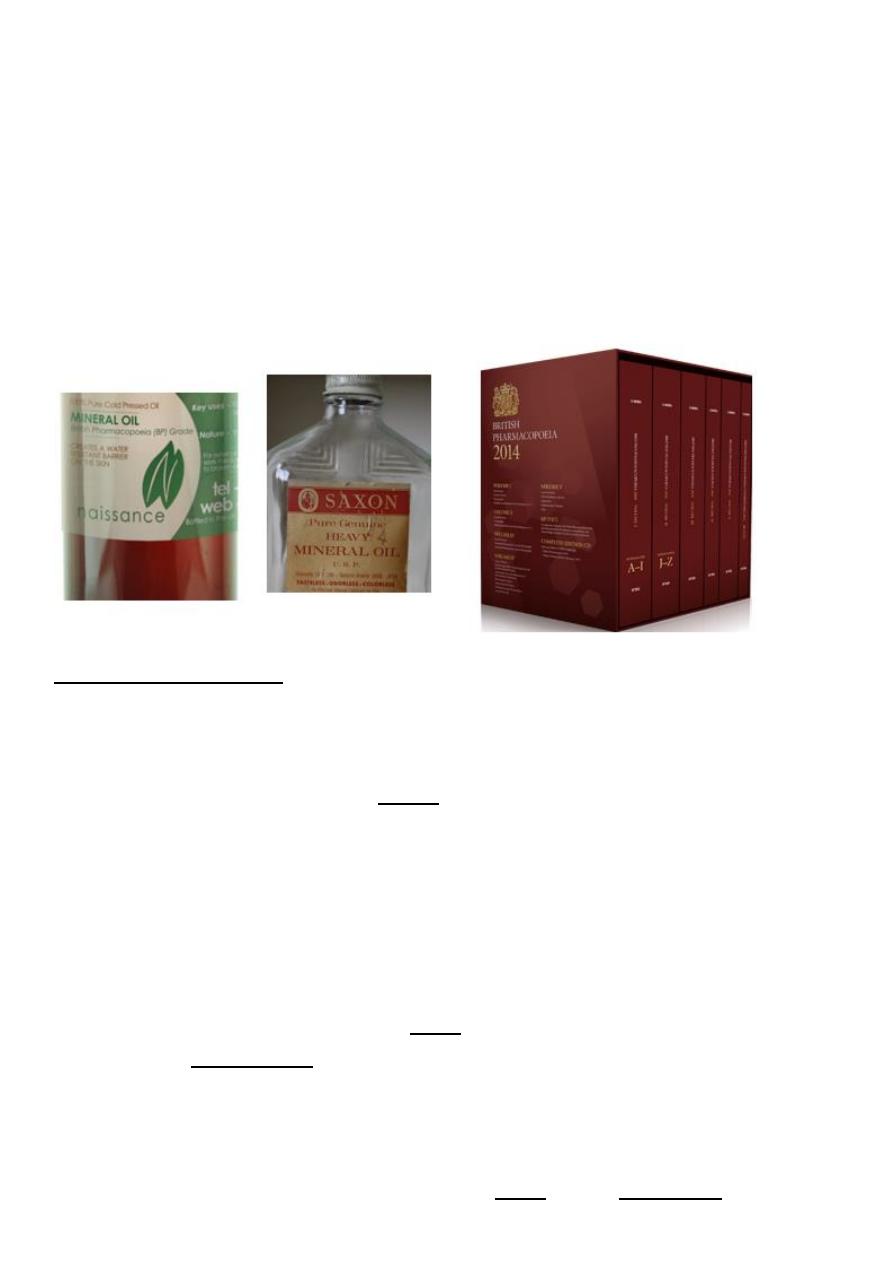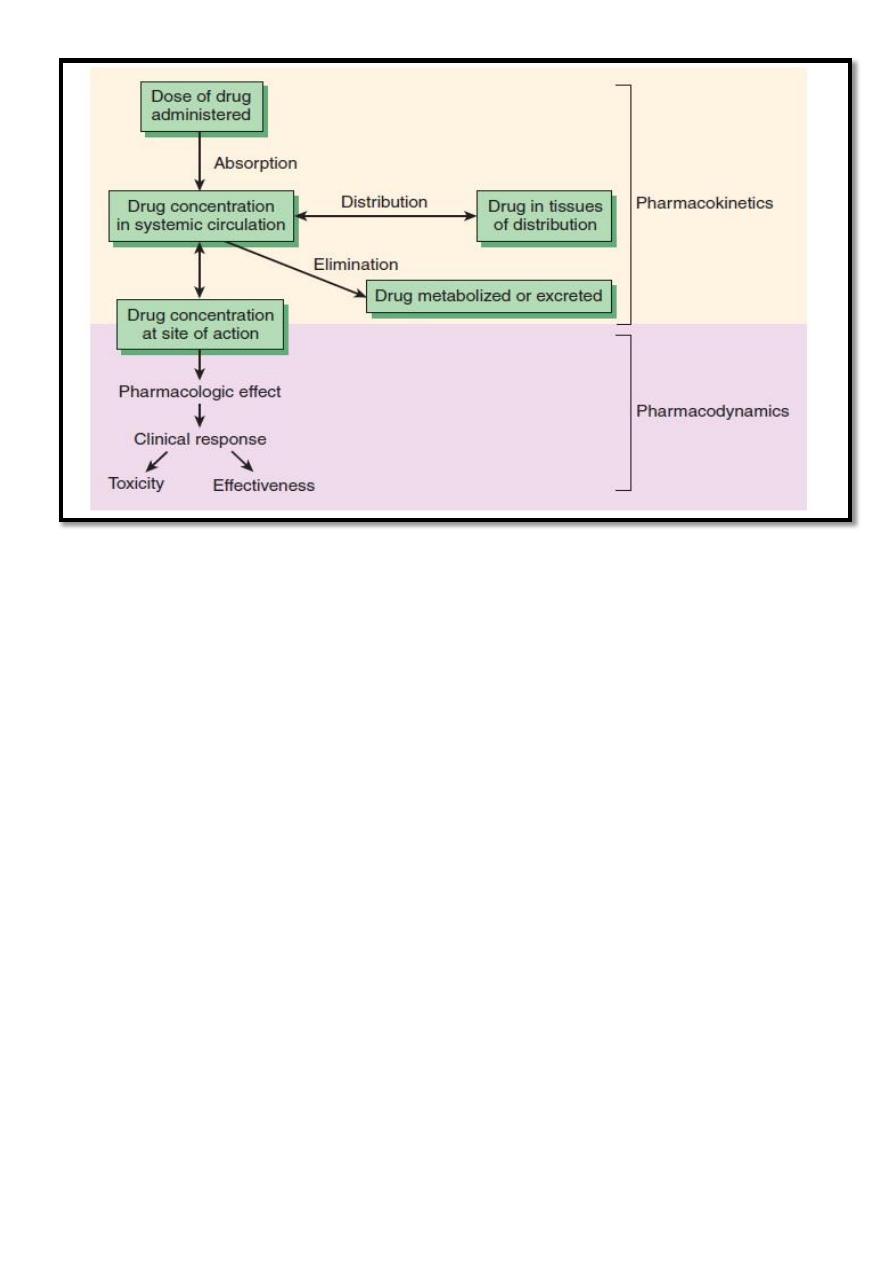
Definitions Pharma. 1 Dr. Ali
Pharmacology: The word pharmacology is derived from the
Greek: pharmakon meaning drug or poison and logos: word or
discourse. It is the study of interaction of drugs with living organisms. It
covers the use of drugs in the prevention (prophylaxis) and treatment
of diseases.
It also includes history, source, physicochemical properties, dosage
forms, methods of administration, absorption, distribution mechanism
of action, biotransformation, excretion, clinical uses and adverse effects
of drugs.
Clinical Pharmacology: It evaluate the pharmacological action of drug
preferred route of administration and safe dosage range in human by
clinical trails.
Drugs: Drugs are chemicals that alter functions of living organisms.
Drugs are generally given for the diagnosis, prevention, control or cure
of disease.
Pharmacy: It is the science of identification, selection, preservation,
standardization,
compounding and dispensing of medical substances.
Toxicology: It is the science of poisons. It is the area of pharmacology
concerned with the undesirable effects of chemicals and biologicals on
cellular functions.
Poisons are substances that cause harmful, dangerous or fatal
symptoms in living substances. Many drugs in larger doses may act as
poisons.

Origin and sources of drugs:
1. Minerals: Liquid paraffin, magnesium sulfate, magnesium trisilicate,
kaolin,
etc.
2. Animals: Insulin, thyroid extract, and antitoxin sera, etc.
3.
Plants:
Morphine,
digoxin,
atropine,
castor
oil,
etc.
4. Synthetic source: Aspirin, sulphonamides, paracetamol, zidovudine,
etc.
5. Micro organisms: Penicillin, streptomycin and many other antibiotics.
6. Genetic engineering: Human insulin, human growth hormone etc.
Drugs formulations:
1- Injections ( Ampoules, vials)
2. Liquid ( SYRUP, SUSPENSION)
3. Tablets, capsule
4. Suppositories, pessaries
5. Sprays and inhalants
6. Ointments and creams
7. Trans dermal patches
8. Drug implants
9. Micro and nanoparticles
10. Targeted drug delivery
Drug Nomenclature:
Every drug has at least three names
-
a chemical name
(e.g. 6-dimethylamino-4,4-diphenyl-3-heptanone
hydrochloride),
-
a generic name
(e.g., methadone hydrochloride) and
-
a proprietary (or trade) name
(e.g., Dolophine).

Chemical and generic names are written in lower case whereas trade
names are capitalized.
If drug is marketed by more than one pharmaceutical company, then the
same drug may have several trade names but only one official generic
name.
Pharmacopoeia: An official code containing a selected list of the
established drugs and medical preparations with descriptions of
their source, chemical nature, physical properties and tests for
their identity, purity and potency, route of administration, dynamic
effects and kinetic parameters. It also included: Indications (under
what circumstances is the drug used). Drug action (what clinical

effect does the drug have. Adverse effects (are there clinically
relevant side effects of the drug). Contraindications (are there
circumstances in which the drug should not be administered to
certain patient populations e.g: the elderly, those with renal
insufficiency, pregnant women etc).
Such as [British Pharmacopoeia (
B.P
),
United States Pharmacopoeia (
USP
)…etc
Drugs administration:
A. Oral:
Oral route is the most common route of drug administration. It is
. It may be in the form of tablets,
mostly used for the neutral
capsules, syrup, emulsions or powders.
Advantages:
It is convenient, It is the cheapest available route, It is easy to use, It is
safe.
Disadvantages:
are destroyed by gastric juices.
Not suitable for all drugs, Some
is slow, so is not preferred during
eg: insulin.,
emergency., May cause gastric irritation, May objectionable in
taste., May cause discoloration of teeth e.g. tetracyclines below 14
cause brown discoloration so are not advisable during pregnancy.,
and
when
First pass effect : hepatic metabolism of

delivered through portal blood. Greater the first pass effect, less
amounts of the drug reach the systemic circulation
B. Parenteral Routes
1-Intravenous injections:
Intravenous injections might be applied to the cubital, basilic and
cephalic
veins.
Advantages:
Immediate action takes place , This route is preferred in emergency
situations, This route is preferred for unconscious patients., Titration of
dose is possible., Large volume of fluids might be injected by this route,
Diluted irritant might be injected. , Absorption is not required.,No first
pass effect takes place., Blood plasma or fluids might be injected.
Disadvantages:
There is no retreat. , This method is more risky. , suitable for insoluble
prSepsis-Infection might occur. , Phlebitis(Inflammation of the blood
vessel) might occur., Infiltration of surrounding tissues might result., This
method is not suitable for oily preparations. ,This method is not
eparations
2
-
Intramuscular injection:
Drugs may be injected into the arm (deltoid), thigh (vastus lateralis) or
buttocks (gluteus maximus). The volume used is 3 ml.
Advantages:
Absorption is rapid than subcutaneous route., Oily preparations can be
used.
,Slow
releasing drugs can
be
given
by
this
route.
Disadvantages
Some time painful, Not suitable for irritant drugs., Using this route might
cause nerve or vein damage.

3. Subcutaneous injection: Some drugs, notably insulin, are routinely
administered SC. Drug absorption is generally slower SC than IM, due to
poorer vascularity. Absorption can be facilitated by heat, massage or
vasodilators. It can be slowed by co-administration of vasoconstrictors, a
practice commonly used to prolong the local action of local anesthetics.
As above, arm > thigh.
4-Intraperitoneal injection: is the injection of a substance into
the peritoneum (body cavity). In general , it is rarely used in human
(fearing from peritonitis), it is preferred when large amounts of
replacement fluids are needed, or when low blood pressure or other
problems prevent the use of a suitable blood vessel for intravenous
injection
5- Intradermal injection: is injection of drug in the dermis, it is one of
the routes used for administration vaccins and for the test of allergy.
C. Topical application to the skin and mucus membranes:
a. Eye For desired local effects.
b. Intravaginal for infections or contraceptives.
c. Intranasal for alleviation of local symptoms.
d. Respiratory mucus membrane: inhalors
e. Skin Topical drug administration for skin disorders minimizes systemic
exposure. However, systemic absorption does occur and varies with the
area, site, drug, and state of the skin.
f-Sublingual (buccal) Certain drugs are best given beneath the tongue or
retained in the cheek pouch and are absorbed from these regions into
the local circulation. These vascular areas are ideal for lipid-soluble
drugs that would be metabolized in the gut or liver, since the blood
vessels in the mouth bypass the liver (do not undergo first pass liver
metabolism), and drain directly into the systemic circulation. This route
is usually reserved for nitrates and certain hormones.

g. Rectal: The administration of suppositories is usually reserved for
situations in which oral administration is difficult. This route is more
frequently used in small children. The rectum is devoid of villi, thus
absorption is often slow.
h. Inhalation Volatile anesthetics, as well as many drugs which affect
pulmonary function, are administered as aerosols. Other obvious
examples include nicotine and tetrahydrocannabinol (THC), which are
absorbed following inhalation of tobacco or marijuana smoke. The large
alveolar area and blood supply lead to rapid absorption into the blood.
Drugs administered via this route are not subject to first-pass liver
metabolism.
D- Administration of drugs by special routes:
-Intrathecal and epidural injection: drugs are given via lumbar puncture
and injection into the subarachnoid space such as using life-threatening,
antibiotics, antifungals and anticancer and also in spinal anesthesia to by
bass
blood-brain
barrier
-Intra-arterial injection: Used in certain special situations, notably with
anticancer drugs, in an effort to deliver a high concentration of drug to a
particular tissue. Typically, the injected artery leads directly to the target
organ.
-Intra-articular: Injected directly into a joint e.g. hydrocortisone
Pharmacodynamics: what the drug does to the body : The study of the
biological
and
therapeutic
effects
of
drugs.
Pharmacokinetics: what the body does to the drug: Study of the
absorption, distribution metabolism and excretion

